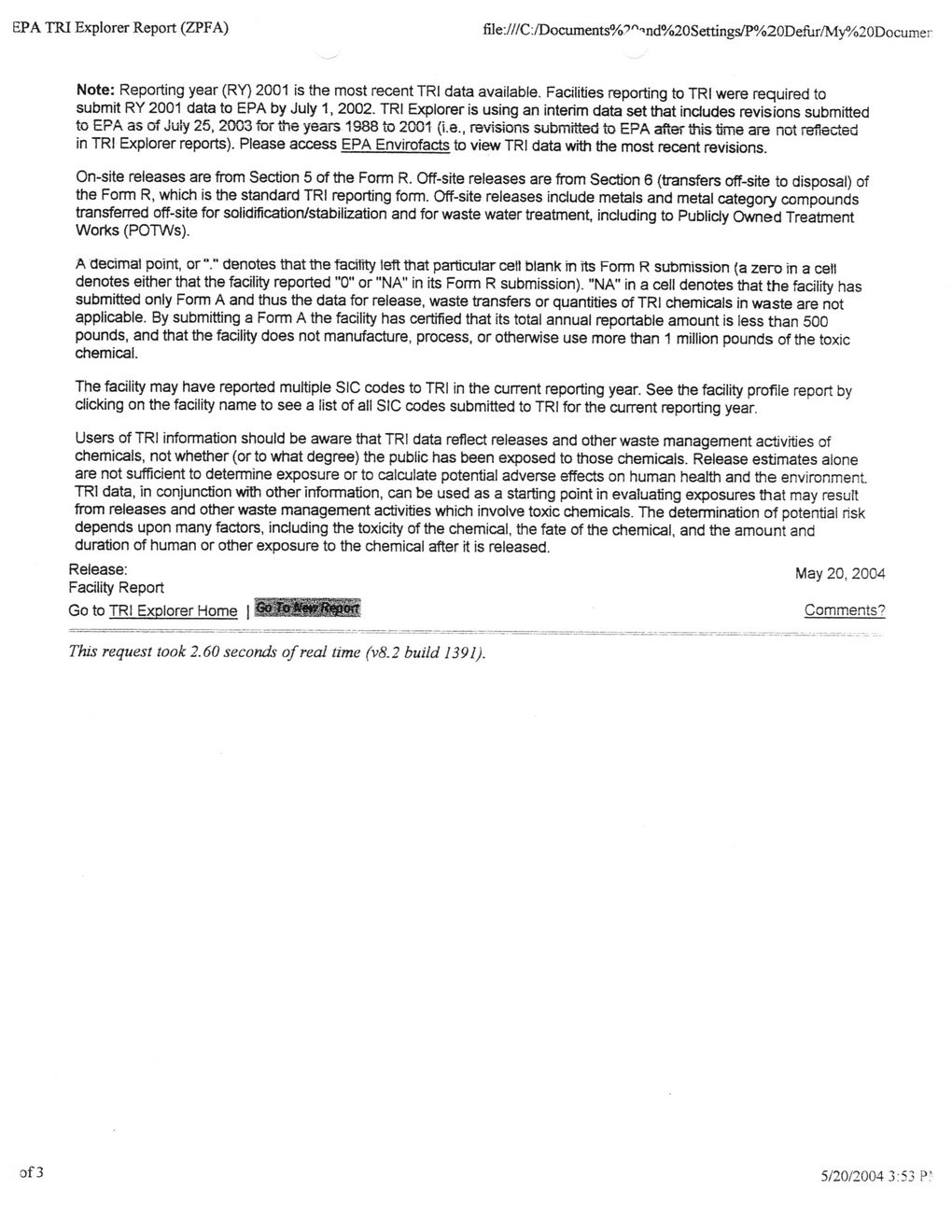This text was obtained via automated optical character recognition.
It has not been edited and may therefore contain several errors.
EPA TRI Explorer Report (ZPFA) file:///C:/Documents%',A',nd%20Settings/P%20Defur/My%20Documer Note: Reporting year (RY) 2001 is the most recent TRI data available. Facilities reporting to TRI were required to submit RY 2001 data to EPA by July 1, 2002. TRI Explorer is using an interim data set that includes revisions submitted to EPA as of July 25, 2003 lor the years 1S88 to 2001 (i.e., revisions submitted to EPA after this time are not reflected in TRI Explorer reports). Please access EPA Envirofacts to view TRI data with the most recent revisions. On-site releases are from Section 5 of the Form R. Off-site releases are from Section 6 (transfers off-site to disposal) of the Form R, which is the standard TRI reporting form. Off-site releases include metals and metal category compounds transferred off-site for solidification/stabilization and for waste water treatment, including to Publicly Owned Treatment Works (POTWs). A decimal point, or denotes that the facility left that particular cell blank in its Form R submission (a zero in a cell denotes either that the facility reported "0" or "NA" in its Form R submission). ”NA" in a cell denotes that the facility has submitted only Form A and thus the data for release, waste transfers or quantities of TRI chemicals in waste are not applicable. By submitting a Form A the facility has certified that its total annual reportable amount is less than 500 pounds, and that the facility does not manufacture, process, or otherwise use more than 1 million pounds of the toxic chemical. The facility may have reported multiple SIC codes to TRI in the current reporting year. See the facility profile report by clicking on the facility name to see a list of all SIC codes submitted to TRI for the current reporting year. Users of TRI information should be aware that TRI data reflect releases and other waste management activities of chemicals, not whether (or to what degree) the public has been exposed to those chemicals. Release estimates alone are not sufficient to determine exposure or to calculate potential adverse effects on human health and the environment. TRI data, in conjunction with other information, can be used as a starting point in evaluating exposures that may result from releases and other waste management activities which involve toxic chemicals. The determination of potential risk depends upon many factors, including the toxicity of the chemical, the fate of the chemical, and the amount and duration of human or other exposure to the chemical after it is released. May 20, 2004 Comments'? This request took 2.60 seconds of real time (v8.2 build 1391). Release: Facility Report Go to TRI Explorer Home | 5/20/2004 3:53 P’

Dupont Air Hearings Sierra-Club-Recommendations-(25)